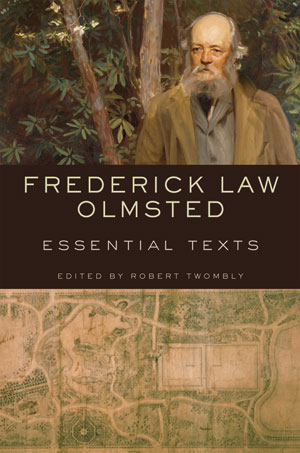 Full Disclosure: I received a promotional copy of Frederick Law Olmsted, Essential Texts Edited by Robert Twombley from W.W. Norton in the mail.
Full Disclosure: I received a promotional copy of Frederick Law Olmsted, Essential Texts Edited by Robert Twombley from W.W. Norton in the mail.
Frederick Law Olmsted, with Calvert Vaux, designed both Central Park and Prospect Park. Central Park came about because their firm entered a competiion to design it. In 1865 they collaborated on Brooklyn’s Prospect Park.
Quite a career.
The editor, Robert Twombley, writes in the introduction,
“His reputation rests not only on the quantity but also on the quality of the work he produced, which, even when neglected, altered, or executed improperly in the first place, remains a constant source of public and private pleasure. But the work itself was informed by his social and design philosophies, which are not always obvious in his writing but are nevertheless embedded there.”
These essays, dating from 1850s to the 1890s reveals Olmsted’s thoughts on park design, theory, landscape gardening and cities, are written in a slightly formal but clear style, and are very forward thinking about the importance of nature in the city.
In an essay entitled Public Parks and the Enlargement of Towns included in the collection Olmsted writes:
“What I would ask is whether we might not with economy make special provision in some of our streets—in a twentieth or a fiftieth part, if you please, of all—for trees to remain as a permanent furniture of the city? I mean, to make a place for them in which they would have room to grow naturally and gracefully. Even if the distance between the houses should have to made half as much again as is is required in our commercial streets, could not the space be afforded?
…The change both of scene and of air which would be obtained by people engaged for the most part in the necessarily confined interior commercial part of the town, on passing into a street of this character after the trees had become stately and graceful, would be worth a good deal.”
